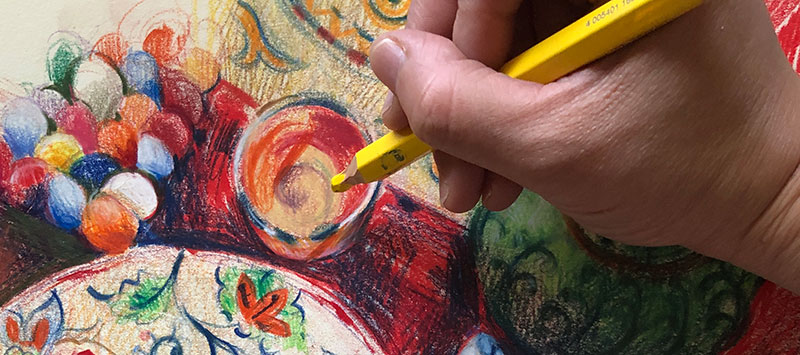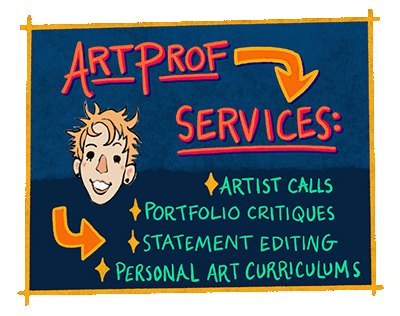Most artists are not prepared for how dicey commissions can be. This page is a complete guide to every facet of doing commissions so you can see the entire process from beginning to end.

Commissioned artwork can be anything: a portrait, a wedding gift, artwork for a hotel, etc. Unfortunately, there are no universal rules for art commissions.
Consequently, many clients take advantage of artists, so follow these guidelines to protect yourself.
7 Important Tips

- Inform clients about your process
- Clients don’t know what they want
- Write a detailed contract
- Have non-refundable down payments and/or kill fees
- Don’t start work until the contract is signed
- Have an approval process
- Keep framing, installation, and delivery separate from the commission
This video provides practical tips for art commissions to streamline your process for commissions.

There are a lot of logistics involved in an art commission that you need to be aware of, it’s surprising how often clients won’t respect your time and process.
We discuss how to advertise, setting rates, creating a commission schedule, drawing up a contract with your client, making an invoice, and more.
Discussion led by Art Prof Clara Lieu and Teaching Artist Lauryn Welch.

Video Walkthrough
- Publicity for commissions
- Art style in commissions
- Clients don’t know anything
- Meeting face to face with clients
- See a sample commission chart
- Pricing
- Signing contracts
- Scheduling & checkpoints
- Non-refundable deposits
- Protect yourself
- Invoices
- Framing
- Commission agreement
- Communication skills
- Legal aspects of commissions
- Bad commission experiences
- Gaining exposure


1. Inform your client about your art making process
Most clients have no idea what goes into creating an artwork; it’s up to you to lay out a concrete plan for the commission.
Clients have to understand that a commission is a mutual commitment, and that their continual involvement is mandatory.

Walk your client through every step of the process from beginning to end. For example, steps to create a painting might be listed like this:
- pencil sketches
- color sketches
- small painting studies
- final acrylic painting
- framing
- delivery
- installation.

2. Clients who commission artwork usually have no idea what they want
Assume that a client’s verbal description of what he or she wants is not going to align with your visual interpretation right away.
Don’t rely on anything a client says until you’ve actually put the results in front of them.
I had one colleague who created a commission exactly as agreed after many rounds of presentations.
Despite how faithful my colleague had been to the client’s wishes throughout the entire process, the client’s reaction to the finished piece was “I just don’t like it.”
Even with extensive communication with their client, making every effort to satisfy their needs, the client still gave them trouble!
Clients do however, seem to always know what they don’t want, which is much less useful.
I did a portrait commission once, and the client told me that the cheek of a person in the painting was “too pink.” I lightened the cheek slightly, only to be told “now it’s too pale.”

One of my former professors who was a portrait painter for over 20 years told me that he was sick to death of endless complaints from clients.
He used to intentionally do an exceptionally bad job on one area of the painting so that the client could complain about that area, (usually a trivial detail like the collar of a shirt, which would be easy to fix) instead of some other area on the face that would take weeks of shooting in the dark until the client was satisfied.

3. Write a detailed contract
A contract is mandatory for any commission. Write down every detail in the contract, such as the size and media of the artwork, your compensation, due dates for payments, who is responsible for framing, installation, delivery of the artwork, etc.
If your client balks at signing a contract, WALK AWAY. Keep an eye out for those red flags!

4. Have down payments and/or kill fees
Down payments and kill fees protect artists from investing labor without pay. A kill fee is charged if the client decides to end the project prematurely.
Some artists don’t have a kill fee, but ask for a 50% non-refundable down payment.
Other artists will ask for a smaller non-refundable down payment and have a kill fee. Clients are also less likely to end a project if they have already invested money.

5. Do not commence work until a contract is signed
When I was a recent graduate, I received a commission from a local community center. I met with one person, who said they were thinking about a painting of a klezmer band, painted with bright colors.
I got to work right away, it didn’t occur to me at the time that I had no contract.
I called up a local klezmer band, drove 40 minutes to one of their performances, and shot reference photos for the paintings. I drew many sketches, and made small scale paintings.

I presented the sketches and paintings at a meeting with four people. They hated everything, in fact, one person said that the paintings looked “scary” to her (how a colorful painting of a klezmer band could be scary is beyond me).
By the end of the meeting, they said they wanted to see a “mixed collage that featured singing children in a garden.” After that meeting I never heard from them again, and I lost my own time and money.

6. Have an approval process
Divide your process into stages, and require your client to approve each stage before moving forward. Working in stages lets you catch client concerns before you get too far into the process.
I once did a portrait commission where the client approved the sketches, so I proceeded onto the final painting.
I was about 75% finished, when the client decided last minute that she wanted to change the black background to yellow, and her daughter’s black shirt into a red sweater. I essentially had to start from scratch.

I had written nothing in the contract about making changes after approval, so my workload doubled without any additional pay.
When the commission is complete, ask your client to sign another contract that states that they have accepted the commission as complete, and that any changes made beyond that point will incur a fee.

7. Keep framing, installation, and delivery separate from the commission
If applicable, ask the client to take financial responsibility for any framing, installation and delivery.
These costs can add up quickly for an artist: professional framing is always expensive, delivering a large work involves renting a truck, and installation of the work really needs to be done by a professional art installer.

You don’t want to risk a large painting falling off the wall and getting damaged, and most clients want artwork that can remain on permanent display.





